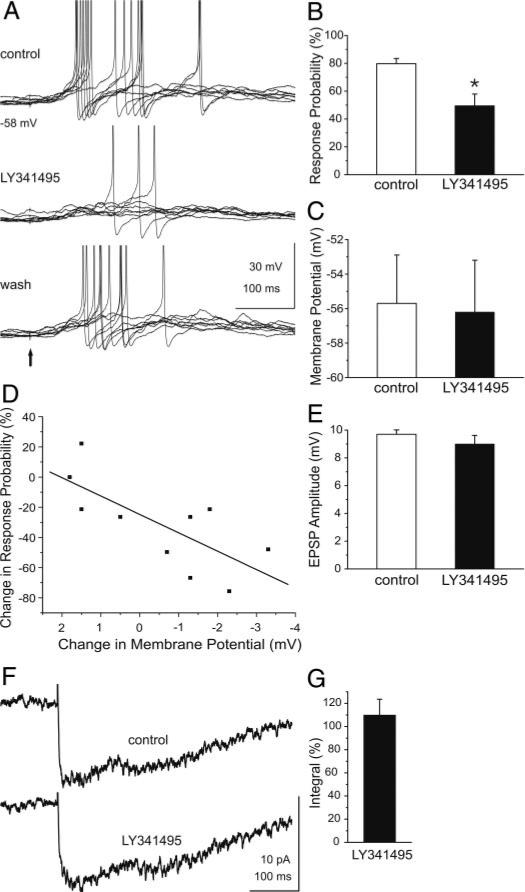Fig. 8.
Blockade of mGluRs attenuates mitral/tufted cell-evoked excitation of GCs. A, top: single shocks (marked by ↑) applied to the glomerular layer to directly activate mitral/tufted cells evoked EPSPs and spikes in a mouse GC. Middle: application of LY341495 (100 μM) markedly reduced evoked excitation of the same GC in a reversible manner (bottom). Twelve stimulus trials are shown in each trace. B: bar graphs of group data (n = 10) show the percentage of glomerular layer-evoked spikes before (control) and during application of LY341495. C: LY341495 did not significantly alter the resting membrane potential in the group of 10 cells tested. D: regression analysis (see text for details) revealed that the reduction of evoked spikes in individual GCs varied with the degree of hyperpolarization. Data are fitted with a regression line (r = –0.73; P = 0.01). E: LY341495 did not alter the mean amplitude of the EPSP (n = 10 cells). F: averaged EPSC response (n = 10) to glomerular layer-evoked stimulation before (control) and during application of LY341495. G: bar graph of group data showing the effect of LY341495 (100 μM) on the integral of the glomerular layer-evoked EPSCs (n = 10). Data are plotted as the percentage of the control integral. LY341495 did not alter the integral of the evoked EPSCs (P < 0.45).

